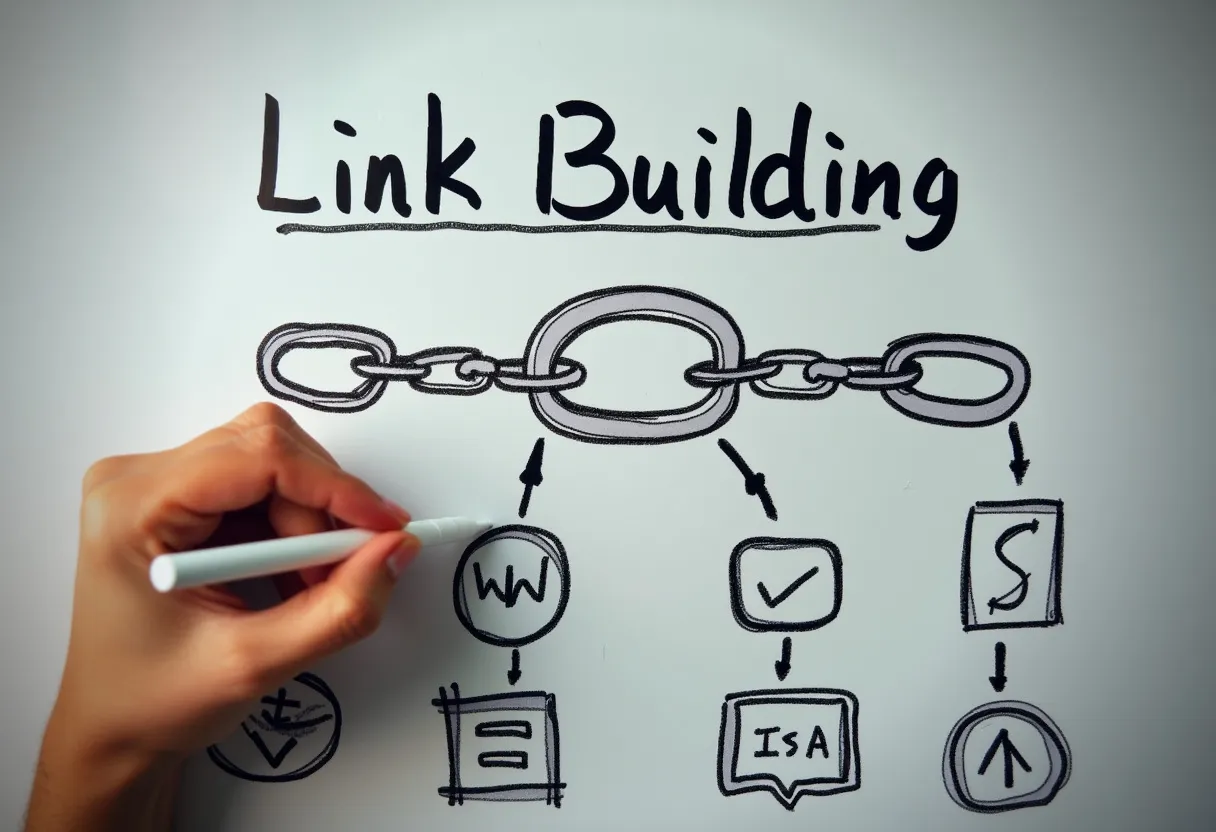Definition
What is Link Building?
Link building is the process of acquiring hyperlinks from other websites to improve the SEO (Search Engine Optimization) of a webpage or website. It involves convincing other websites to integrate links that lead to your own website, which can point to your homepage, internal pages, posts, or images. This technique is aimed at increasing the authority and reputation of a website in the eyes of search engines like Google.
How It Works
Function and Concept:
Link building works by establishing relevant hyperlinks from external sites to your website. Here are the key aspects:
Internal Link Building:
This involves creating links within your own website to help search engine crawlers and users navigate your site more easily. Internal links simplify the indexing process, boost the authority of your domain, and create an organized structure for your content.
External Link Building:
This involves obtaining links from other websites. When a high-quality website links to your site, it acts as a vote of confidence, indicating to search engines that your content is valuable and trustworthy. The quality and relevance of these external links are crucial, as they significantly impact your website’s ranking on search engine results pages (SERPs).
Link Metrics:
The value of links is often assessed using metrics such as Page Authority, Domain Authority from Moz, and URL Rating, Domain Rating from Ahrefs. These metrics help determine the quality and quantity of links, which in turn affect your website’s ranking.
Why It Matters
Importance in SEO:
Link building is a critical component of SEO for several reasons:
Search Engine Rankings:
Backlinks from high-authority sites improve your website’s credibility and rankings on search engines. Google’s algorithm, including systems like PageRank, uses backlinks to determine a website’s reputation, helpfulness, and trustworthiness.
Brand Visibility and Trust:
Quality backlinks increase brand visibility and trust. When reputable websites link to your site, it signals to search engines and users that your content is valuable and reliable.
User Experience:
Internal link building enhances user experience by making navigation easier and providing a structured way to explore your website. This also helps search engine crawlers to index your pages more efficiently.
Best Practices
Recommended Methods and Strategies:
Quality Over Quantity:
Focus on obtaining high-quality links from relevant and authoritative sites rather than chasing a large number of low-quality links. One high-quality backlink is often more valuable than multiple low-quality ones.
Relevance:
Ensure that the websites linking to you are relevant to your niche or topic. Links from unrelated sites carry less SEO weight.
Follow Links:
Prioritize “follow” links over “nofollow” links, as “follow” links carry more weight with search engines.
Content Quality:
Create high-quality, valuable content that naturally attracts links. This can include guest blogging, interactive content, and resourceful articles that other websites would want to link to.
Avoid Black Hat Tactics:
Steer clear of black hat SEO techniques such as link farms, reciprocal linking schemes, and buying low-quality backlinks. These can lead to penalties from search engines.
Analyze Competitors:
Analyze your competitors’ link profiles to identify opportunities and gaps in your own link building strategy.
Tools and Metrics:
Use tools like Ahrefs, Moz, and Semrush to analyze and optimize your link building efforts. These tools provide insights into link quality, quantity, and relevance.
Additional Techniques
Link Building Outreach:
This involves reaching out to website owners, bloggers, and influencers to request backlinks. Personalized outreach is often more effective than generic requests.
Link Building Strategies:
Develop comprehensive strategies that include guest posting, broken link building, and creating skyscraper content to attract natural backlinks.
Competitor Backlink Replication:
By analyzing your competitors’ backlinks, you can identify high-quality sites that may link to your content as well. This involves leveraging competitor strategies to acquire similar backlinks.
Competitor Link Gap Analysis:
This method involves identifying gaps between your competitor’s backlinks and your own, then targeting these gaps to enhance your link profile.
Influencer Backlinking:
Partner with influencers who can provide high-quality backlinks through their content. Influencers often have a loyal audience, adding more value to your link.
Local Link Building:
Acquire backlinks from local businesses, chambers of commerce, and local news websites to improve your local SEO and visibility in regional searches.
Reciprocal Link Building:
This involves exchanging links with other websites. While reciprocal linking should be done carefully to avoid penalties, it can still be beneficial if used sparingly and with high-quality sites.
Resource Page Link Building:
Target resource pages in your niche that list useful links. If your content is valuable, these pages may include your link as a helpful resource.
Editorial Link:
These are organic links that come from high-quality content on authoritative sites. Creating shareable content increases the likelihood of acquiring editorial links.
Conclusion
Link building remains an essential facet of SEO, directly influencing search engine rankings, brand visibility, and user experience. By focusing on quality over quantity, relevance, and using ethical practices, you can build a powerful link profile that elevates your website’s authority and trustworthiness. Employing a variety of techniques such as Link Building Outreach, Competitor Backlink Replication, and Local Link Building can help diversify and strengthen your link building strategy over time. Utilize analytical tools to continually refine your approach, ensuring sustained SEO improvement.



